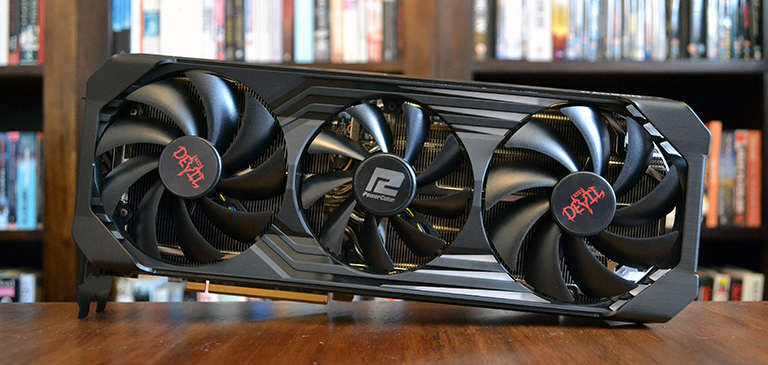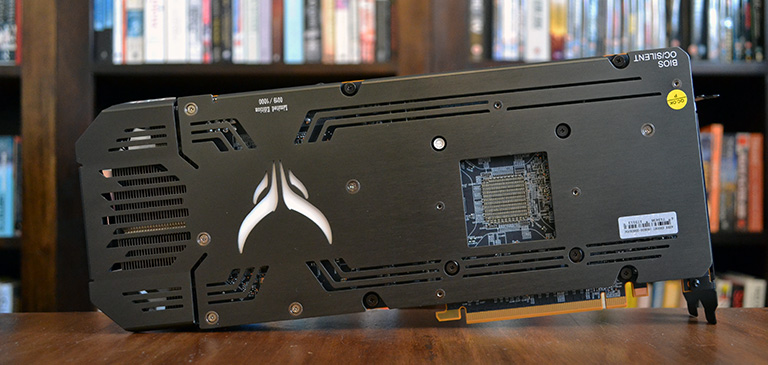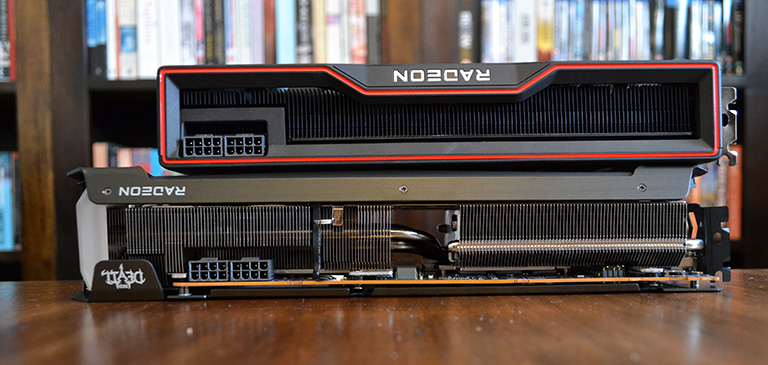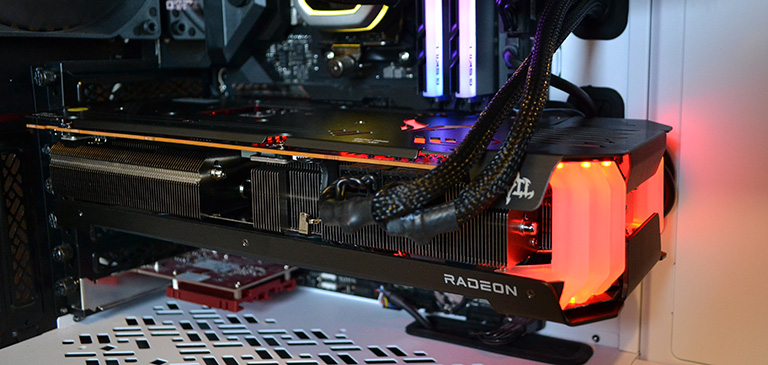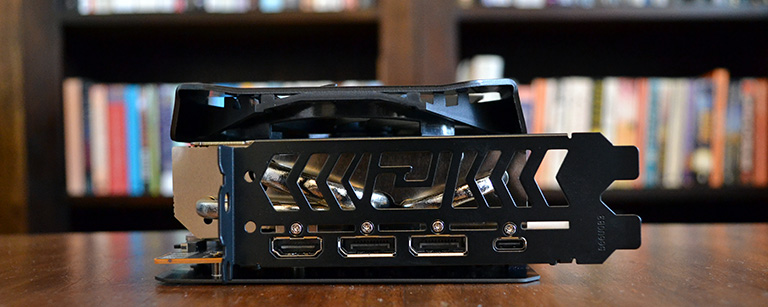Introduction
Common practise in the high-end PC graphics space is to first release a GPU by building a reference board around it. Nvidia does this with Founders Editions and AMD has followed suit with what it calls the MBA solutions. Key difference between the two companies is AMD offers the MBA reference board to partners who then typically release their custom-designed versions a week or so after official launch.
This distinction is important when the reference board is rather good in its own right. AMD duly delivered an impressive showcase for the Radeon RX 6000 Series GPUs last week, but partners have been busy readying Big Navi monsters of their own. First into the labs is the PowerColor Radeon RX 6800 XT Red Devil Limited Edition 16GB.
PowerColor is also selling a non-limited-edition version of this board - though one can argue current high-end GPUs are limited in supply by their very nature - which has a different bundle and outputs, and we'll explain the differences further down.
In appearance, though, both are the same, and that means PowerColor takes the Big in Big Navi quite literally. This behemoth measures around 330mm long, 145mm high, takes up three slots and weighs 1,600g.
Outer fans are 100mm while the central spinner is 90mm. PowerColor has a 60°C switch-on temperature that's only achieved when gaming. The ramp from fan idle to over 1,000rpm is abrupt, as is the stopping when temperature drops below the same cut-off temperature, so it may pay dividends to have a smoother fan profile. That said, size clearly works on Radeon RX 6800 XT as the trio first runs up to 1,350rpm and then settle down to 1,150rpm under sustained load. More distracting than the muted fans is coil whine that's obvious in certain titles.
PowerColor's PCB is almost the width of the large card. The heatsink doesn't touch the rear side of the PCB. Rather, it's more useful as a frame for increasing card rigidity, while the liberal use of cut-outs enables air to also be pushed out of this side. Being relatively limited edition, this is number 19 out of 1,000 cards, though such is the shortage we'd be surprised if there were even 1,000 Red Devils produced in the next few months.
Red Devil LE ships with a BIOS switch that toggles two modes - OC or Quiet. The former, which is default, carries a 281W Power Target while the Quiet installs a 255W limit with the fans spinning even more slowly, at only 950rpm under load. Be mindful not to equate Power Target with total board power; they are not the same. We'd hazard Red Devil LE has a 315W/300W TGP in Nvidia speak for its two settings.
The MBA is a study in design restraint. Red Devil LE is the opposite. Dual heatsinks are connected via seven heatpipes - 3x 8mm and 4x 6mm - under which resides a 16-phase power supply. The MBA board, meanwhile, has a much smaller cooler and 13-phase supply, though both share twin 8-pin PCIe power connectors. No funny 12-pin business here.
Going large provides ample opportunity for PowerColor to expand upon RGB lighting. The card has six translucent diffusers between the centre and right-hand fan. Another six are present at the front in two sets of three on each side, and there's the Red Devil logo on the backplate. Behind these is RGB lighting customisable via Devil Zone RGB software.
Plugging the board in shows how the lighting permeates across the PCB. Unfortunately for PowerColor, the LEDs are clearly visible at the top and bottom of the edge sections. Having localised lighting also means the overall effect isn't smooth due to clear hot spots.
The utility works well enough in setting various colours, intensity, patterns, and so forth, but anyone wanting to synchronise with their system's lighting needs to connect the card up via a supplied aRGB cable and PCB-mounted header.
AMD clocks its MBA board in at a boost speed of 2,250MHz. Red Devil increases this to 2,340MHz but leaves memory alone at 16Gbps. In real-world use, the card averages 2,380MHz boost, or approximately 100MHz faster than reference. It's this figure which will differentiate the two in the performance benchmarks. In other words, don't expect a huge increase over the standard MBA because AMD is already running RX 6800 XT pretty damn high.
The Red Devil LE carries dual DisplayPort, HDMI and USB-C. The non-LE replaces the Type-C with another DisplayPort. Both have identical clocks and an illuminated ports section for easy plugging. This bundle features a couple of Devil keycaps, a sticker, quickstart start, all wrapped inside in an attractive box.
Now we come to the thorny issue of price and availability. There's no real indication on either in the year of constraint. One would expect at least a $50 premium over MBA boards, though how much in-stock cards fetch is anyone's guess. Don't be surprised to see models selling comfortably north of £750 as and when the first run of stock trickles through.
Bigger and bolder than the reference design, let's now see how it performs.






